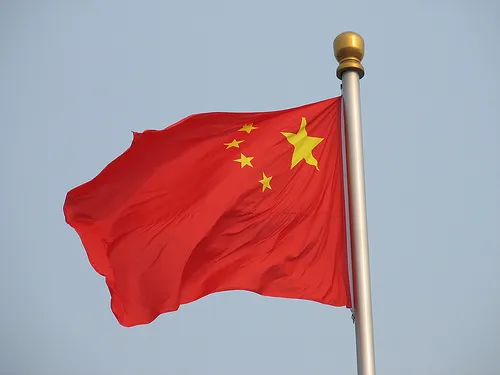
Mountain of evidence reveals that there wasn't a surge in China exports
The 14.1 jump was just 'fine'.
According to DBS, much hoopla has surrounded China’s December trade data, where exports “surged” by 14.1% YoY. The release on Thursday brought a hefty boost to markets, loud cries of recovery in Asia’s growth prospects and, perhaps inevitably, many suggestions that China’s data are at best unreliable and at worst, cooked up.
Here's what DBS has to say:
Our take? That none of the hoopla was justified. There was no export ‘surge’, the numbers are fine and markets are what they are / do what they do all the time.
First off, the data. As is usually the case, ‘surges’ or ‘collapses’ appear that way because they are reported in on-year terms: December over December, June over June, and so on. A little drop in July this year – stacked up against a small pop last year – and on- year growth drops to zero. If the reverse occurs, you get a 14% YoY surge in December.
Almost always, the cure for this distorted vision is to look at exports and imports – and almost everything else – in level terms. When you do that for China’s trade data, you immediately see a few interesting things.
First of all, there was no surge in China’s exports in December. December exports were a tad – a tad – higher than the trend they have run since May 2011 – no more, no less. Second, in sharp contrast to most media reports and market perception, China’s exports haven’t been in dire straits over the past year.
They have clearly travelled a 10% growth path, subject to the normal monthly volatility that any economic series is likely to display. The cries of despair last July when export growth dropped to 0% YoY were no more justified that the cries of relief last week when growth hit 14%.
If exports are still just bumbling along (if even at a crisp 10% pace), does this mean China’s growth is never going to pick up? No. We reckon GDP growth will come close to 9% in 2013, up from 7.8% in 2012 – but mainly on the back of domestic demand growth rather export growth. Fixed asset investment growth in China in 2012 was about 20%, some 30% slower than average (26%).
Some of that slowdown was intentional and but some of it was due to officials being distracted by a leadership transition, high profile criminal trials and viral squabbles with neighbors over offshore island territories.
If investment growth takes a step but half-way back to the mean this year, nearly a percentage point of growth would be added to GDP in 2013. That would put it at about 8.25% - 8.5% for domestic demand reasons alone.
With exports to Europe no longer falling and those to the US continuing to rise, the external environment could / should add another half a point to GDP too, putting total growth close to 9% in 2013.



![SBR 5 Lorem Ipsum News 2 [8 May]](https://cmg-qa.s3.ap-southeast-1.amazonaws.com/s3fs-public/styles/exclusive_featured_article/public/2025-05/a_hand_pointing_to_a_futuristic_technology_5b87c9d0e3_3.png.webp?itok=M3Hf-9XR)
![SBR 4 Lorem Ipsum [8 May Top Stories]](https://cmg-qa.s3.ap-southeast-1.amazonaws.com/s3fs-public/styles/exclusive_featured_article/public/2025-05/a_hand_pointing_to_a_futuristic_technology_5b87c9d0e3_2.png.webp?itok=2m5Wl0MX)


![Exclusive three SBR 12 Lorem Ipsum [8 May]](https://cmg-qa.s3.ap-southeast-1.amazonaws.com/s3fs-public/styles/exclusive_featured_article/public/2025-05/a_hand_pointing_to_a_futuristic_technology_5b87c9d0e3_11.png.webp?itok=8kn_UIfA)
![SBR 3 Lorem Ipsum [ Exclusive 2]](https://cmg-qa.s3.ap-southeast-1.amazonaws.com/s3fs-public/styles/exclusive_featured_article/public/2025-05/a_hand_pointing_to_a_futuristic_technology_5b87c9d0e3_1.png.webp?itok=YCyjLegJ)
![SBR 2 Lorem Ipsum [8 May]](https://cmg-qa.s3.ap-southeast-1.amazonaws.com/s3fs-public/styles/exclusive_featured_article/public/2025-05/a_hand_pointing_to_a_futuristic_technology_5b87c9d0e3_0.png.webp?itok=_cKD-29o)

![Video [Event News]](https://cmg-qa.s3.ap-southeast-1.amazonaws.com/s3fs-public/styles/event_news_featured_article/public/2025-05/screenshot-2025-05-08-at-4.58.53-pm_0.png.webp?itok=Kud35sMs)
![Event News SBR 9 Lorem Ipsum [8 may]](https://cmg-qa.s3.ap-southeast-1.amazonaws.com/s3fs-public/styles/event_news_thumbnail/public/2025-05/a_hand_pointing_to_a_futuristic_technology_5b87c9d0e3_8.png.webp?itok=DTh_dbYp)
![Event News SBR 9 Lorem Ipsum [8 May]](https://cmg-qa.s3.ap-southeast-1.amazonaws.com/s3fs-public/styles/event_news_thumbnail/public/2025-05/a_hand_pointing_to_a_futuristic_technology_5b87c9d0e3_7.png.webp?itok=vzDAzb6V)
![Event News SBR 8 Lorem Ipsum [8 May]](https://cmg-qa.s3.ap-southeast-1.amazonaws.com/s3fs-public/styles/event_news_thumbnail/public/2025-05/a_hand_pointing_to_a_futuristic_technology_5b87c9d0e3_6.png.webp?itok=jvHFc4P6)
![Video [Event News]](https://cmg-qa.s3.ap-southeast-1.amazonaws.com/s3fs-public/styles/video_thumbnail/public/2025-05/screenshot-2025-05-08-at-4.58.53-pm_0.png.webp?itok=yZnI0YBb)
![Video 1 SBR [8 May]](https://cmg-qa.s3.ap-southeast-1.amazonaws.com/s3fs-public/styles/video_thumbnail/public/2025-05/screenshot-2025-05-08-at-4.58.53-pm.png.webp?itok=9AAeRz_k)

 Advertise
Advertise

